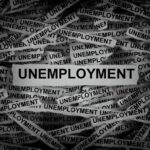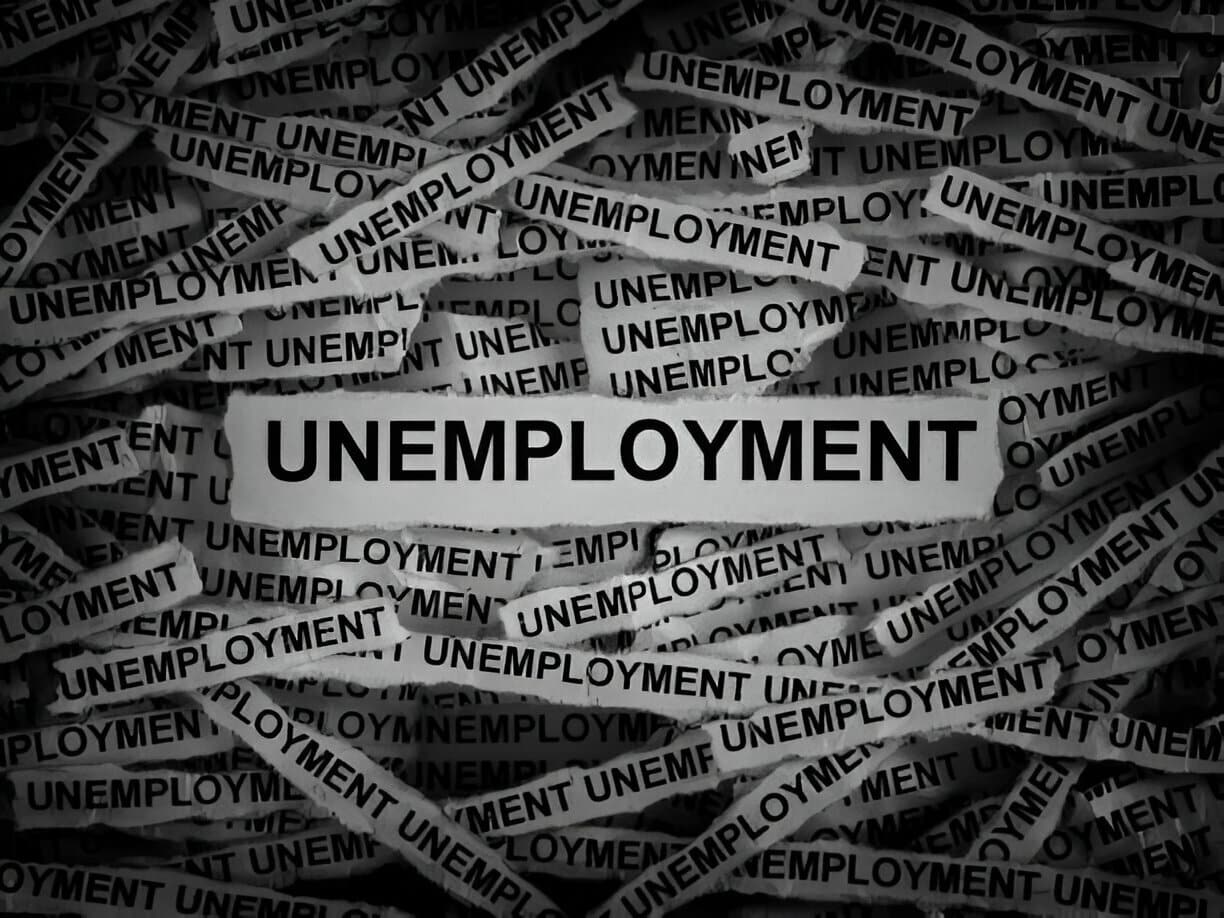Unemployment doesn’t directly hurt your credit score, but the financial strain it creates certainly can. When your regular income stops, keeping up with bills becomes challenging, potentially leading to late payments or increased credit card balances—both of which impact your credit health. What specific actions should you prioritize when your budget is tightening? How can you protect your credit score during unemployment while focusing on basic necessities?
Maintaining good credit during unemployment requires strategic planning and careful prioritization. While it may seem overwhelming to manage your credit score during unemployment when finances are tight, there are practical steps you can take to minimize negative impacts and even continue building positive credit history. This guide will walk you through effective strategies for monitoring your credit, prioritizing payments, managing utilization, and exploring alternative credit-building options during this challenging financial period—helping you protect your financial future while navigating the present uncertainty.
Monitoring Your Credit During Unemployment
During periods of unemployment, monitoring your credit score during unemployment becomes even more crucial than during stable financial times. Without regular income, you’re at higher risk for credit-impacting events, making vigilance essential. The good news is that you don’t need to spend money to maintain thorough oversight of your credit health during this financially challenging period.

While many people check their credit reports only occasionally, unemployment demands a more proactive approach. Each of the three major credit bureaus—Equifax, Experian, and TransUnion—now offer free weekly credit report access through AnnualCreditReport.com, a significant expansion from the previous once-yearly free reports. This increased accessibility allows you to track changes to your credit profile in near real-time without incurring costs. Staggering your requests across bureaus can provide you with consistent monitoring throughout each month, as information may vary slightly between reports.
When reviewing your reports, pay particular attention to potential errors that could unnecessarily harm your credit score during unemployment. Common errors include accounts that don’t belong to you, incorrectly reported late payments, or outdated negative information that should have been removed. The dispute process is free and can be initiated online through each bureau’s website. Focus especially on high-impact errors like incorrect late payments or collections accounts, as these can significantly impact your score at a time when you can least afford additional credit challenges.
- Priority monitoring areas during unemployment:
- Payment history (35% of FICO score) – Track for any incorrectly reported late payments
- Credit utilization (30% of FICO score) – Monitor for balance reporting errors
- Derogatory marks – Check for collections or charge-offs that may not be yours
- Credit inquiries – Verify all hard inquiries were authorized by you
- Account status – Ensure all active accounts show correctly as open
Free credit monitoring services through platforms like Credit Karma, Credit Sesame, or those offered by some credit card companies can supplement your regular report reviews by providing alerts about significant changes. These notifications can serve as an early warning system for potential issues, helping you protect your credit score during unemployment. While paid monitoring services offer more comprehensive protection, these free alternatives provide adequate oversight during financial hardship without adding expenses.
Strategic Payment Prioritization When Income Is Limited
Creating a strategic payment hierarchy becomes essential when unemployment limits your financial resources. Not all payments affect your credit equally, and understanding these differences allows you to allocate limited funds where they’ll have the most significant impact on preserving your credit score during unemployment. This strategic approach helps minimize damage while navigating temporary financial constraints and supports long-term financial recovery.
The foundation of protecting your credit score during unemployment is maintaining on-time payments for accounts that report to credit bureaus. Credit card payments, auto loans, mortgages, student loans, and personal loans should take priority over non-reporting bills like utilities or subscription services (though these can eventually impact your credit if sent to collections). Among credit-reporting accounts, secured debts like mortgages and auto loans typically deserve highest priority, as they can result in particularly damaging repossessions or foreclosures that create both immediate housing/transportation crises and long-term harm to your credit score during unemployment.
Before missing any payments, proactive communication with creditors can unlock options you might not realize exist. Many major lenders offer hardship programs specifically designed for temporary financial setbacks like unemployment. These programs might include temporary payment reductions, interest rate decreases, fee waivers, or even short-term payment suspensions. The key to protecting your credit score during unemployment is contacting creditors before falling behind, as options diminish once accounts become delinquent. When calling, clearly explain your unemployment situation, demonstrate your previous positive payment history if applicable, and propose a specific, realistic payment arrangement that acknowledges both your current limitations and commitment to fulfilling your obligations.
For credit cards specifically, making at least the minimum payment is crucial for preserving your credit score during unemployment. A single 30-day late payment can drop your score significantly and remain on your report for seven years. If you absolutely cannot make minimum payments across all accounts, consider a strategic approach that preserves your most important or longest-held accounts, as these often have greater positive impact on your credit history length—an important factor in maintaining your credit score during unemployment.
Federal student loans offer particularly flexible hardship options, including unemployment deferment or income-driven repayment plans that can reduce payments to as low as $0 during periods without income, all while protecting your credit score during unemployment. These options deserve special consideration in your payment hierarchy, as they provide breathing room without credit consequences and help safeguard your credit score during unemployment through uncertain financial times.
Managing Credit Utilization Without Regular Income
Credit utilization—the percentage of available credit you’re currently using—significantly impacts your credit score as the second most important factor after payment history. Managing your credit score during unemployment requires extra attention to this ratio, as many people naturally rely more heavily on credit cards to bridge financial gaps, inadvertently increasing utilization and putting their credit score during unemployment at risk.
The conventional wisdom suggests keeping utilization below 30% of your available credit for optimal score impact, with lower percentages yielding even better results. This threshold becomes particularly challenging when you’re unemployed and relying more on credit. To protect your credit score during unemployment, consider making multiple small payments throughout the month (known as “micropayments”) instead of waiting for the statement date. Since most credit card companies report balances once monthly, strategically timed payments can help reduce the reported utilization ratio—even when usage increases.
Another key to protecting your credit score during unemployment is resisting the urge to close unused credit accounts. While it might seem financially responsible, closing them reduces your total available credit and drives up your utilization percentage. Even dormant accounts help your credit score during unemployment by keeping your utilization lower. To avoid closure by the issuer, make occasional small purchases and pay them off right away.
Requesting credit limit increases presents a complex strategic decision during unemployment. On one hand, higher limits could lower your utilization ratio; on the other, many issuers require income verification for increases, and the resulting hard inquiry could temporarily lower your score. If you had stable employment until recently and have good credit, some issuers may approve automatic increases without income verification or hard inquiries. These “soft pull” increases represent the ideal scenario, improving your utilization without negative consequences. Research your specific card issuers’ policies before applying, as approaches vary significantly between companies.
For those with multiple credit cards, strategic allocation of necessary expenses can optimize utilization across accounts. Rather than maxing out one card, spreading expenses keeps individual card utilization lower. Credit scoring models consider both overall utilization and per-card utilization, with lower balances across multiple cards generally more favorable than concentrating balances on fewer cards.
Alternative Credit-Building Strategies During Unemployment
Unemployment presents an opportunity to explore alternative credit-building strategies that require minimal financial investment while maintaining or improving your credit profile. These approaches can help you continue building positive credit history even during periods of income interruption, positioning you for stronger financial footing once re-employed.
Becoming an authorized user on a financially responsible family member’s credit card account represents one of the most powerful alternative credit-building strategies during unemployment. This arrangement allows the primary account holder’s positive payment history to appear on your credit report, potentially improving your score without requiring you to make purchases or payments yourself. The ideal authorized user arrangement involves a long-established account with perfect payment history, low utilization, and a high credit limit. Have a transparent conversation with the primary account holder about expectations—whether you’ll receive a physical card, if you’re expected to make purchases, and how payments will be handled. This strategy works best with close family members like parents or spouses who maintain excellent credit habits.
Secured credit cards provide another viable option for maintaining credit activity with minimal risk during unemployment. Unlike traditional credit cards, secured cards require a security deposit (typically $200-$500) that serves as your credit limit, eliminating the risk of accumulating unmanageable debt. The best secured cards report to all three major credit bureaus, charge reasonable annual fees (or none at all), and offer a clear path to graduate to unsecured products after demonstrating responsible use. Even small, routine purchases paid off immediately can generate positive payment history. Some secured cards even offer modest rewards programs, though the primary focus should remain on building credit rather than maximizing benefits during financial hardship.
Non-traditional credit reporting systems have gained traction in recent years, offering ways to leverage regular payments that traditionally don’t impact credit scores. Experian Boost allows you to connect utility accounts, streaming services, and even rent payments to your Experian credit report, potentially increasing your score by reporting these on-time payments. Similarly, services like eCredable and Perch can help report rent payments to credit bureaus. These alternative data sources can be particularly valuable during unemployment when establishing new traditional credit accounts may be challenging. While these services primarily affect specific bureau scores rather than across all three, any improvement helps maintain credit health during financial transitions.
Credit-builder loans offer a structured approach to building credit while simultaneously establishing savings during unemployment. These products, available through credit unions and online lenders like Self, place loan proceeds in a secured account while you make small monthly payments. Once the loan term completes, you receive the funds plus any interest earned. The regular payments help improve your credit score during unemployment while the eventual payout creates a small emergency fund. With payments as low as $25 monthly, these products can fit even tight unemployment budgets while serving the dual purpose of credit building and forced savings.
Planning for Credit Recovery Post-Unemployment
Planning for credit recovery should begin before securing new employment, creating a roadmap for rebuilding once income stability returns. This forward-thinking approach allows you to prioritize actions that will have the most significant impact on your credit profile once you’re financially able to implement them, accelerating your recovery timeline.
The first phase of post-unemployment credit recovery involves addressing any negative marks that occurred during your period without income. Start by bringing all past-due accounts current as quickly as possible, as recent late payments impact your score less severely than those currently delinquent. For accounts that went to collections during unemployment, research whether the collection agency offers “pay-for-delete” arrangements, where they remove the negative mark in exchange for payment. While not all agencies offer this option, it’s worth negotiating before making payments. For older collection accounts, weigh the pros and cons of payment carefully—in some scoring models, paying an old collection can actually temporarily lower your score by updating the “last activity date,” though newer FICO models disregard paid collections.
Setting realistic timeframes for credit score improvement helps manage expectations during recovery. Credit scoring models place greater emphasis on recent behavior, meaning positive actions after re-employment begin impacting your score relatively quickly. However, the timeline varies based on the severity of negative marks during unemployment. Minor issues like increased utilization can resolve within 1-3 months of reduction, while late payments impact scores for their full seven-year reporting period, though their effect diminishes significantly after two years. Creating a month-by-month recovery plan with specific goals helps track progress while maintaining motivation through what can be a lengthy process.
The delicate balance between aggressive debt repayment and maintaining emergency savings becomes particularly crucial after a period of unemployment. Financial experts increasingly recommend building a minimal emergency fund (typically $1,000) before aggressively tackling debt, then splitting additional funds between debt reduction and savings until reaching 3-6 months of essential expenses in reserve. This balanced approach acknowledges the reality that without adequate emergency savings, unexpected expenses often lead to renewed credit reliance, creating a counterproductive cycle. After experiencing unemployment, this balanced approach helps prevent future credit damage if income interruptions recur.
Rebuilding relationships with creditors requires strategic approaches tailored to how each account was handled during unemployment. For accounts maintained in good standing, consider requesting goodwill adjustments for any late payments, credit limit increases, or interest rate reductions based on your renewed income stability and previous history. For accounts that suffered more significant delinquency, some creditors offer “second chance” programs after re-establishing on-time payments for several months. These programs can restore previous credit limits, reduce penalty interest rates, or reinstate rewards programs that may have been suspended. Taking steps like these is essential in rebuilding your credit score during unemployment and beyond. Documenting all communications during this rebuilding phase protects your rights and provides evidence should you need to dispute any issues with credit bureaus.
Once essential expenses and minimum payments are covered, allocating extra funds toward credit improvement requires strategic decision-making. The two primary approaches—the avalanche method (targeting highest-interest debt first) and the snowball method (paying off smallest balances first)—each offer distinct advantages. While the avalanche method minimizes interest costs mathematically, the snowball method provides psychological victories through account elimination, which can maintain motivation during the extended recovery process. Choosing the right method can support efforts to rebuild your credit score during unemployment, especially when staying motivated and financially efficient are equally important.
Remember that filing for unemployment does not directly hurt your credit score, but the financial challenges that come with unemployment can lead to situations that do impact your credit score during unemployment. By implementing these strategies, you can minimize damage during unemployment and position yourself for faster recovery once your income stabilizes.
Conclusion: Protecting Your Credit Score During Unemployment
Navigating unemployment doesn’t mean surrendering your credit health. By implementing strategic approaches—monitoring your reports weekly, prioritizing payments that impact your credit score during unemployment most heavily, managing utilization through micropayments, and exploring alternative credit-building methods—you can weather financial uncertainty while minimizing long-term damage. The key lies in proactive communication with creditors, strategic allocation of limited resources, and maintaining perspective on which actions truly protect your credit score during unemployment during temporary hardship.

Remember that managing your credit score during unemployment isn’t just about defense—it’s about positioning yourself for a stronger financial future when stability returns. While your focus naturally shifts to immediate necessities during income interruption, the actions you take today directly influence how quickly you’ll recover tomorrow. Your credit score during unemployment isn’t just a number; it’s a reflection of financial resilience that can be preserved even when income isn’t. Isn’t it reassuring to know that even in your most vulnerable financial moments, you still maintain significant control over your credit destiny?


